How to make paper cups.My motivation in developing this was that peat pelets are not available, at local stores, during the months when you would actually want to start seeds. Then, they are expensive and sell out quick.
There is no nutrition in these pellets. You have to buy liquid fertilizer, or the seed will eventually use up it's reserves and lose vigor.
There are other products, to make your own cups out of paper. One of these has a sort of ball, pressing pages into a bowl. That is not secure.
I believe I can make a commercial prototype out of HDPE plastics (milk jugs, bottle caps, coffee containers) which melt at low heat and can be shaped with hand tools.
Maybe, this will be a late night commercial, someday.
________________________________
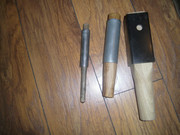
Different sized tools, made of scavenged materials --
A sprinkler pipe, pole from an obsolete, analogue antenna, and cleaned-up trailer hitch found in a gutter.
Pieces of firewood were turned in a lathe and sanded, but the basic shape could be hand carved, or made from anything else that will fit, for instance, a smaller piece of pipe.
________________________________
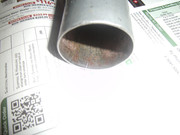
The expanded image (up close) shows me using the edge of the tool, to remove staples. Don't try to do this too many times, using your finger nails.
________________________________
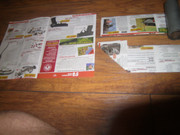
Use the tool to flatten your paper and make creases. The more layers you use, the stiffer it will be.
________________________________
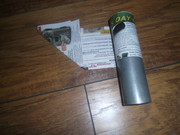
Use finger tension, to roll up your paper.
________________________________
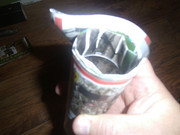
The paper is allowed to hang off. This will eventually form the bottom of your pot.
________________________________
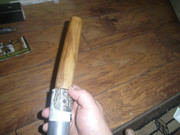
Force the paper inside.
________________________________
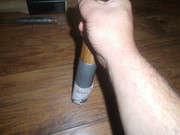
Making the bottom of the pot, by compressing the paper, under force.
________________________________
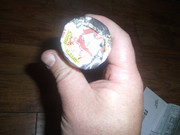
Bottom of the pot, shows how paper has rolled up, inside. It doesn't matter, if there is a hole in the bottom. Later, compressed soil will stay inside.
________________________________
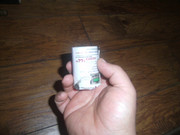
It's easy take the paper cup, off the tubing. Notice how the diagonal fold is nicely tucked inside, so that no flaps of paper hang off.
________________________________

It's tough! It can't be pulled apart, unless you try very hard.
________________________________
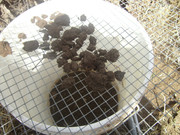
Filtered compost, using recycled materials.
________________________________
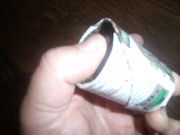
Force the dirt inside, under thumb pressure. It holds a lot of soil.
________________________________
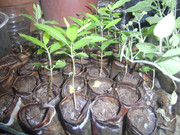
White pomegranate seedlings. (Hard water and wood ash leach through the paper.)
The paper will wick water up, from the saucer, and into the dirt.
You can plant the entire cup in the ground, but must water frequently, while the plant is getting established, because the paper can also wick water away from the seedling.